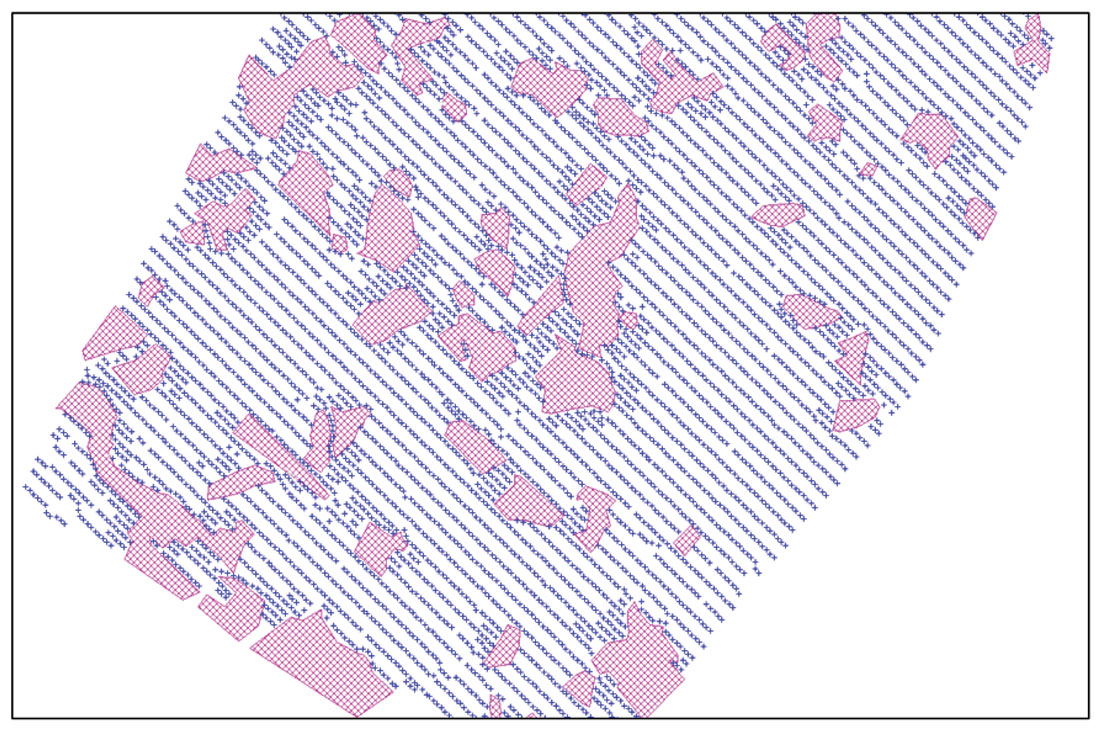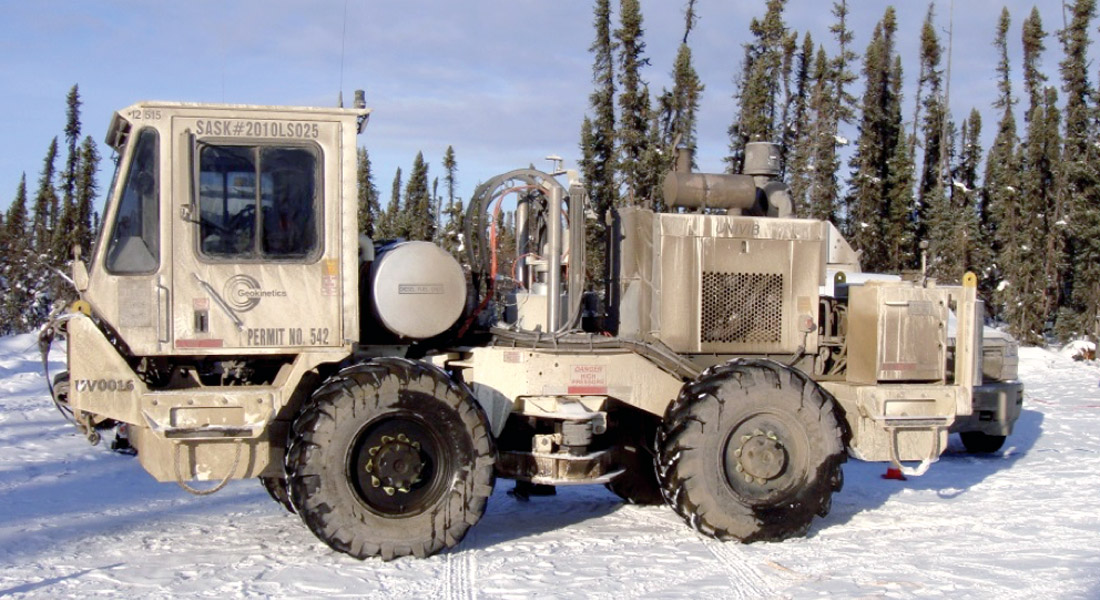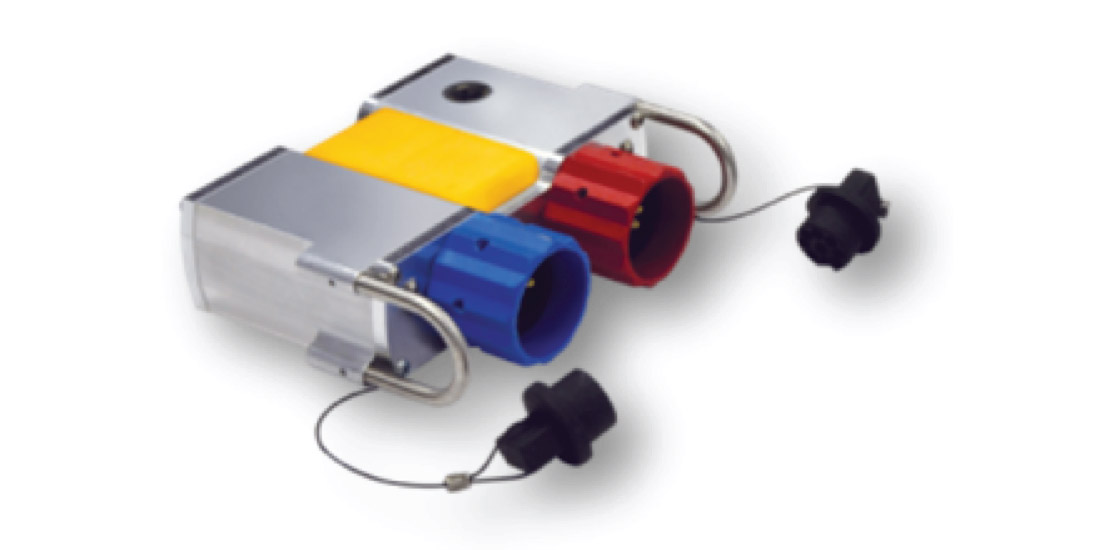Seismic exploration has long been done in remote, out of the way regions of the globe. However, a definition for frontier area is not a region which is necessarily remote but one that has had limited exploration. This can mean anything from distant jungles to Arctic forests, but a common theme is that access by seismic crews has been limited or restricted in the past. Fewer regions of the earth now qualify, but the evolving technology of seismic exploration will play a critical role in opening those new frontier areas. Advances in seismic equipment make projects in sensitive or operationally challenging locations more practical and in some cases possible. Modern seismic equipment is light and low impact; cableless systems can be deployed in any environment and are nearly invisible to local populations or indigenous wildlife. Compact vibrators pack a big punch and can access challenging terrain with very low impact operations, which makes the combination ideal for the remaining frontier areas. Combined with high productivity vibroseis methods, these combined technologies are getting utilized in other regions of the world successfully. The collective advantage of all the technologies is proving to be pivotal for seismic acquisition.
Cableless Seismic Equipment
The utilization of cableless equipment for collecting seismic data has grown steadily since the early 2000’s. Today in North America, cableless equipment has all but totally replaced cabled seismic equipment as the method for collecting data. This evolutionary change was driven by two main factors. The primary reason is the development and availability of cost effective reliable gear coupled with the need to control the cost of seismic projects. The second reason is because modern cableless systems are comprised of remotely deployable nodes, each of which is a standalone recording system. By virtue of this architecture, the systems are fully scalable and can be deployed at any group interval and in virtually any setting were access is possible. It is this flexibility of the equipment which has made the concept popular with the contractors and explorationists alike.
Many prospective areas have not been thoroughly explored with seismic because access or terrain was difficult. Examples of this type of area can be found in the Marcellus Shale region of the northeastern US. The region is mountainous and is covered by dense forest in areas. Land ownership is fractioned into many small tracts, making permitting very difficult (Figure 1). Land owners are sensitive to the often intrusive nature of oil and gas exploration, the so-called “social cost”. However, cableless systems have found a strong following in this area because crews can work with light vehicles; and once deployed, the equipment is practically invisible to local population. Seismic exploration can be carried out with little or no lasting impact on the land or its inhabitants. Cableless equipment has also proven to be highly reliable; in most cases 99% trace yields or better are expected, while issues related to battery life and equipment tampering or thefts are now considered manageable or even minor.

Cableless equipment allows for full flexibility in survey design. Geophysicists are no longer constrained by conventional geometry spacing dictated by cable lengths or even by conventional geometry lines. Trends towards more grid based receiver geometries are proving practical and effective. The seismic data recorded in these areas has proven to be a key component in successful drilling programs, assisting exploration companies in picking ideal locations for permanent facilities.
Small-Sized Vibrators
Contrary to the trends of the last decades where vibrators have gotten bigger, small vibrators have become serious contributors to seismic exploration in many areas. Preferred because of their small size, tight turning radius and low environmental impact, they can be found on every continent of the globe (Figure 2). Even though they have small form factor they can be purchased in configurations as heavy as 34,000 lbs. Probably the most appealing virtue of the small-sized vibrator is its geophysical performance. They have successfully swept from 1.5Hz up to as high as 250Hz in production seismic shooting. Tests have shown that frequencies as high as 280Hz can be observed at depths of 7500ft in VSP operations. In the deserts of the Middle East, 26,000lb UniVibs have worked seamlessly on the same projects as 80,000lb vibrators accessing areas where the heavier vibrator could not go. The resultant data when processed is of similar quality when blended.

Small vibrators are easier to transport, they can fit into a standard shipping container with caster type wheels installed plus operators have found that they are easier to permit in urban areas or zones where there are concerns about noise or ground motion. Like their bigger cousins, the small-sized vibrator can run custom sweeps and utilize high productivity operational methods.
Lowest Impact Seismic With No Geophysical Compromise
The combination of highly flexible cableless equipment (Figure 3) and small-sized vibrators adds up to the very lowest impact seismic with little or no compromise on the geophysical qualities of the project. This combination of equipment and careful operational management has been used successfully in national parks and large cities as well as other areas with restricted access. Since the cableless systems are easily scalable, geometries with high density designs can be utilized. Dense receiver spreads have superior properties to sparser geometries in terms of noise attenuation and give distinct advantages in processing. The small-sized vibrator has been shown to get good reflectivity at targets as deep as 10,000ft in areas like the Georgia Rift Basin and Oman. The small size and light footprint of the vibrator reduces surface damage and in areas where line cutting is required, they reduce the degree of line cutting since the vibrator can maneuver a cut line as narrow as 4 meters. In urban settings the cableless equipment can be hidden or buried when it is deployed making in unobtrusive to the local population which reduces theft and tampering. The combination of these two technologies is ideal when low impact seismic is a requirement as is often the case in frontier seismic exploration.

Bridging Technology to Other Regions
The last 10 years of seismic equipment development has been heavily influenced by operational changes in the Middle East. In part, operational strategies related to high productivity vibroseis methods have driven the channel count capability of recording systems to well over 100,000 channels with shooting strategies which manage large multi-fleet operations using DS3 and DS4 methods. With these technologies consequently available on all modern systems, it will be possible to bridge these operational capabilities to other regions of the world.
The small-sized UniVib vibrator is getting utilized in the oil sands area of Alberta and is just one example of how equipment development capabilities, designed for massive projects in the Middle East, can dramatically enhance seismic acquisition in other areas.
The DS3 method (Bouska, 2009) outlines a shooting technique which requires sources to have sufficient spatial separation so that shots fired in the same time slots, will generate data which does not interfere. Originally implemented in production shooting in the Middle East, the method is currently standard on many commercial projects. Combining the small-sized UniVib with the DS3 shooting method in the oil sands region of Alberta has proven to be an operational winner. Due to the fact that the target horizons in this area are very shallow the DS3 separation criteria is also relatively very small. With a 500 meter target horizon the separation requirement is around 750 meters. Larger equipment spreads combined with high productivity shooting methods will yield dramatically faster shooting in this region which has proven to be critical in the very short shooting season imposed by environmental restrictions. The combination of the UniVib vibrator sweeping broadband sweeps and high productivity shooting methods will prove to be a pivotal technology combination in this area. This is a clear cut case where technology developed for other regions is being adapted successfully in new areas.
Portions of this article were originally printed in the June 2016 Harts E&P.











Join the Conversation
Interested in starting, or contributing to a conversation about an article or issue of the RECORDER? Join our CSEG LinkedIn Group.
Share This Article